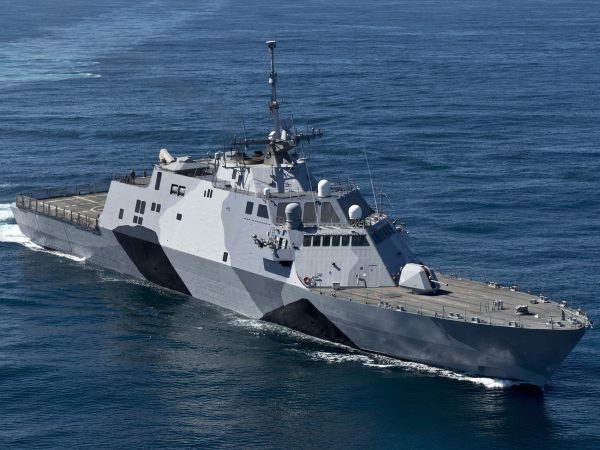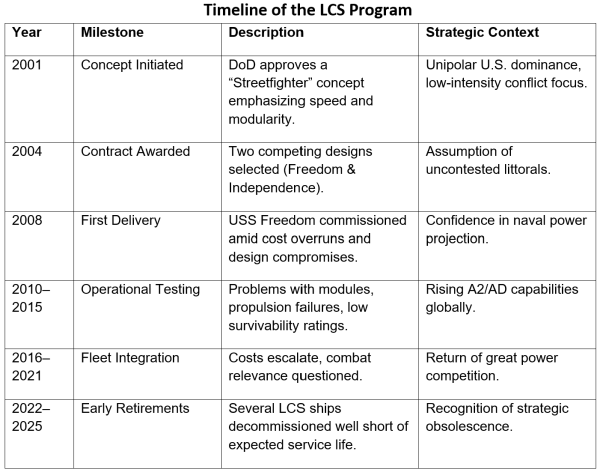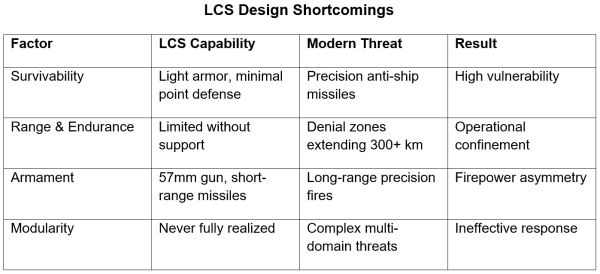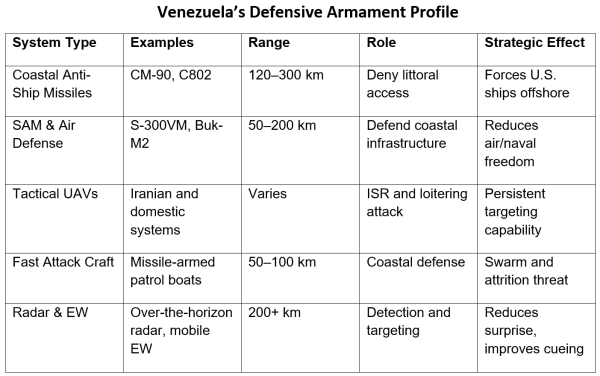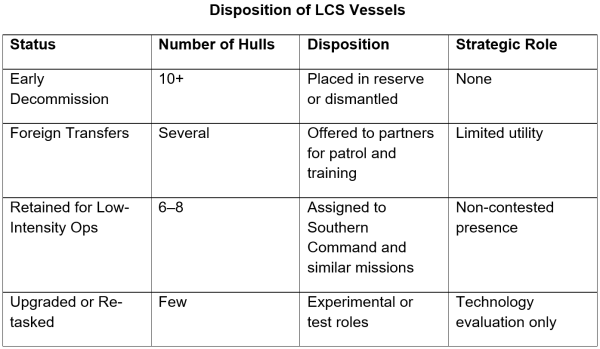For greater than a century, america has projected energy overseas via naval presence. A cruiser anchored offshore was as soon as sufficient to ship a message: comply or face penalties. The technique of gunboat diplomacy rested on overwhelming naval superiority, fast deployment, and the expectation that smaller states would lack the means to withstand.
However instances have modified. The Littoral Fight Ship (LCS), conceived within the early 2000s as a smooth, quick instrument of navy pressure in contested littoral waters, is now being quietly retired. Its failure is greater than a procurement fiasco. It marks the tip of an period during which the U.S. Navy might sail shut to a different nation’s coast and count on submission relatively than defiance. This text explains the convergent failures of the LCS program and the related coercive diplomacy idea.
A Resolution for a Misconceived Mission
The LCS was meant to fill a perceived operational hole between giant floor combatants and smaller patrol craft. It was to mission U.S. naval energy within the shallow, congested waters of coastal zones the place bigger ships could be weak, and to take action shortly, flexibly, and with minimal crew. Two distinct lessons have been developed, Freedom-class and Independence-class, that includes excessive speeds (40+ knots), modular mission packages, and minimal armament. Sadly, this mixture proved fatally flawed. The mission modules by no means matured as promised. Mechanical failures have been frequent and expensive. Survivability towards trendy threats was negligible. The ships have been too fragile for high-end fight and too costly for low-end presence.
Freedom class LCS
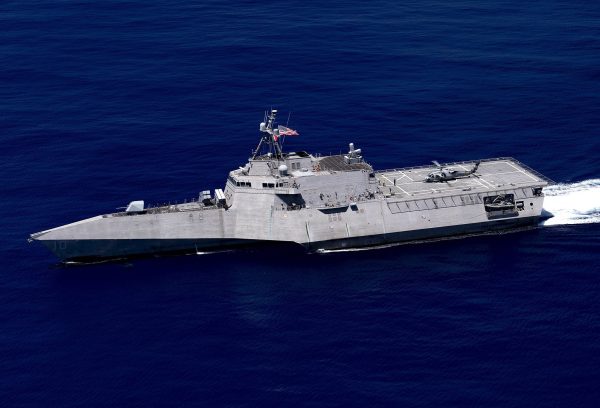
Independence class LCS
Two Designs, One Program: A Constructed-In Vulnerability
From its inception, the Littoral Fight Ship program was uncommon in that the U.S. Navy accredited two fully completely different ship designs relatively than deciding on a single platform. This choice mirrored each strategic uncertainty and bureaucratic calculation. Formally, the dual-track strategy was framed as a aggressive procurement technique meant to decrease prices, encourage innovation, and permit the Navy to “downselect” after real-world testing. The 2 designs, the Freedom-class littoral fight ship monohull and the Independence-class littoral fight ship trimaran, represented sharply completely different engineering philosophies.
Beneath this rationale lay deeper currents. The Navy didn’t have a transparent idea of operations for littoral warfare within the early 2000s, so authorizing two designs functioned as a hedge towards strategic uncertainty. Political concerns have been equally essential. Two shipbuilders, Fincantieri Marinette Marine and Austal USA, meant extra congressional assist, extra distributed jobs, and higher resistance to cancellation.
In principle, the Navy deliberate to pick out a single design after operational testing. In follow, it by no means made that selection. Each designs entered serial manufacturing, making a fractured fleet with incompatible upkeep and coaching pipelines, duplicative logistics chains, and ballooning lifecycle prices. This dual-design construction magnified each different shortcoming of this system and is now widely known as one in all its unique strategic errors.
The Loss of life of Gunboat Diplomacy
Gunboat diplomacy as soon as labored as a result of nice powers had ships able to threatening coastal states with impunity. However the proliferation of Anti-Entry/Space Denial (A2/AD) navy know-how has overturned this dynamic. Land-based programs such because the Chinese language-made C-802 anti-ship missile can strike naval targets within the littoral space. Ballistic and cruise anti-ship missiles like DF-21D prolong denial zones tons of of miles offshore. Loitering munitions and UAV swarms present persistent surveillance and strike functionality. Superior air protection and digital warfare programs make littoral penetration dangerous even towards states missing a conventional navy.
The LCS is poorly suited to the trendy risk surroundings. Designed for velocity and suppleness, it’s calmly armed, minimally protected, and depending on modules that by no means delivered promised capabilities. In any contested littoral, such because the Persian Gulf, the South China Sea, or the Caribbean, it will face layered threats from land-based missiles, UAVs, and submarines. This technological shift means deploying a U.S. naval presence is now not an inexpensive, low-risk type of coercion; it’s an costly potential legal responsibility.
Convergent Failures: Program Improvement and Overseas Coverage Technique
The Littoral Fight Ship program failed not due to a single misstep, however due to a convergence of flawed procurement practices and outdated overseas coverage assumptions. On the procurement aspect, this system was formed by a perception that naval energy projection would stay largely uncontested on the earth’s littorals. The ensuing ships prioritized velocity, modularity, and cost-efficiency over fight effectiveness, survivability, and lethality. Engineering compromises have been made within the expectation that superior mission modules would offset the dearth of natural functionality, an expectation that by no means materialized.
In the meantime, U.S. overseas coverage technique continued to depend on the logic of gunboat diplomacy, assuming that the seen presence of U.S. warships would translate into political leverage. This strategic posture was formulated in an period of unipolar dominance and continued at the same time as the worldwide surroundings shifted. Whereas the Navy was constructing fragile, specialised vessels optimized for permissive operations, potential adversaries have been buying superior Anti-Entry/Space Denial programs, precision strike capabilities, and unmanned platforms able to threatening U.S. floor ships at low price.
These two failures bolstered each other. A platform poorly designed to implement an outdated technique entered service in an period the place that technique now not labored. Consequently, the LCS was not merely a procurement failure; it grew to become a strategic anachronism, emblematic of how procurement dysfunction, institutional inertia, and geopolitical complacency can produce weapon programs which can be out of date the second they enter service.
Venezuela and the Limits of U.S. Naval Coercion
The Trump administration has been growing a navy technique aimed toward toppling the Maduro regime. A hypothetical U.S. naval coercion marketing campaign towards Venezuela would have been easy in 1990, however not immediately. Venezuela doesn’t have a blue-water navy able to difficult the U.S. fleet, nevertheless it doesn’t want one. Its arsenal of shore-based missiles, air defenses, and surveillance programs creates a denial zone that may make operations by calmly armed ships just like the LCS perilous. Even a big U.S. naval pressure would encounter vital resistance from Venezuela.
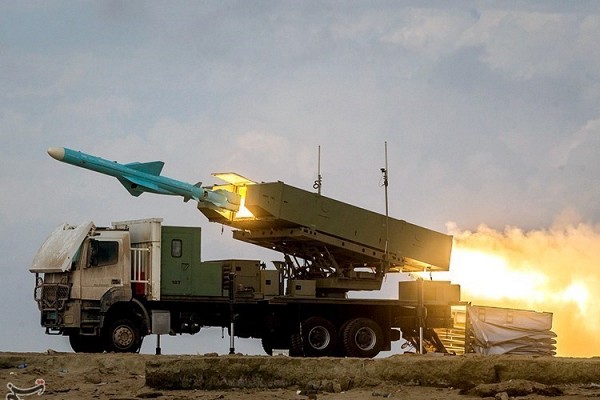
C-802 anti-ship missile
This shift will not be distinctive to Venezuela. Dozens of mid- and small-sized states now possess superior precision weapons and built-in protection networks. Deterrence, as soon as the protect of nice powers, has been democratized. The belief that U.S. ships can function freely off overseas shores is now not credible. Precision missile proliferation lowers the price of efficient deterrence. Unmanned programs present surveillance and strike functionality with out costly fleets. Digital warfare and radar protection erode U.S. benefits in early warning and maneuver. The LCS program failure displays this new actuality: the littoral waters are now not uncontested.
The Yemen Missile Marketing campaign: Proof of Failed Gunboat Diplomacy
If the Littoral Fight Ship program represents the conceptual failure of gunboat diplomacy, the Yemen missile marketing campaign represents its operational collapse. Since late 2023, U.S. and allied naval forces have maintained a robust presence within the Crimson Sea, deploying superior floor combatants and service strike teams to discourage and defeat assaults on worldwide delivery. But regardless of overwhelming firepower, air cowl, and protracted surveillance, the marketing campaign by Ansar Allah has continued largely unabated.
Yemen will not be a terrific energy. It doesn’t area a blue-water navy. Its forces rely totally on cell launchers, anti-ship cruise missiles, and UAVs, a lot of that are cheap or provided via exterior networks. These weapons, dispersed and hid, have allowed a weak actor to disrupt world delivery lanes in defiance of the U.S. Navy’s ahead presence.
This case lays naked the brand new strategic panorama: Naval presence now not ensures coercive management. Trendy shore-based strike programs can outlast, outmaneuver, and outprice conventional deployments. A single missile battery prices a fraction of a U.S. destroyer and may threaten it simply the identical. This asymmetry is what gunboat diplomacy can not survive. The Crimson Sea marketing campaign has made seen what LCS made inevitable: the age of intimidation by offshore warships is over.
Acknowledging LCS Failure
The U.S. Navy has quietly acknowledged the failure of the Littoral Fight Ship (LCS) program. Though initially meant to supply a fleet of greater than 50 vessels, precise operational utility proved so restricted that by the mid-2020s, many of those ships have been slated for early retirement—some with fewer than 10 years of service.
Senior Navy management testified earlier than Congress and admitted that the ships couldn’t survive in a contested surroundings. Finances justification paperwork shifted sources away from LCS modernization and towards extra succesful frigate and destroyer packages. Mission modules, as soon as a central innovation, have been successfully deserted after repeated price overruns and technical failures. The Navy’s 30-year shipbuilding plan reclassified nearly all of LCS hulls as non-combatant or auxiliary belongings. A number of LCS hulls have been decommissioned early and positioned in reserve or used for components reclamation. Others have been provided to overseas allies for switch or coaching functions. A couple of are being retained for low-intensity missions akin to counter-narcotics patrols in permissive environments.
Conclusion
The LCS is greater than a failed warship program. It’s a monument to strategic complacency: a vessel designed for a world that now not exists. The early retirement of LCS ships is an acknowledgment that the period of simple naval coercion is over. Gunboat diplomacy trusted overwhelming, low-cost, and credible pressure projection. That calculus is useless. Precision weaponry has leveled the sphere. Future U.S. maritime technique should acknowledge that naval energy projection can’t be taken as a right. The subsequent time a U.S. administration deploys warships to “ship a message,” it dangers receiving an disagreeable response.

